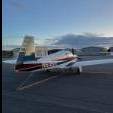Big gap between LOP and ROP
-
Members Online
- Nikolai
- Andy95W
- Scooter
- mooneydemi
- 47U
- philiplane
- Culver LFA
- Justin Schmidt
- show me the mooney
- EricJ
- mluvara
- varlajo
- CL605
- Marc_B
- emiliocastelli
- Guy123
- hammdo
- luv737s
- titus383
- pirate
- Pictreed
- Speed Merchant
- Aerodon
- Air pirate
- Wrench978
- boboxa9895
- McMooney
- good2eat
- kerry
- PT20J
- ohdub
- willerjim273
- Thedude
- Skyland
- Mister_Bevilaqua
- chips452
- generalaviationguru
- larryb
- DonMuncy
- Red Leader
- shawnd


Recommended Posts
Join the conversation
You can post now and register later. If you have an account, sign in now to post with your account.